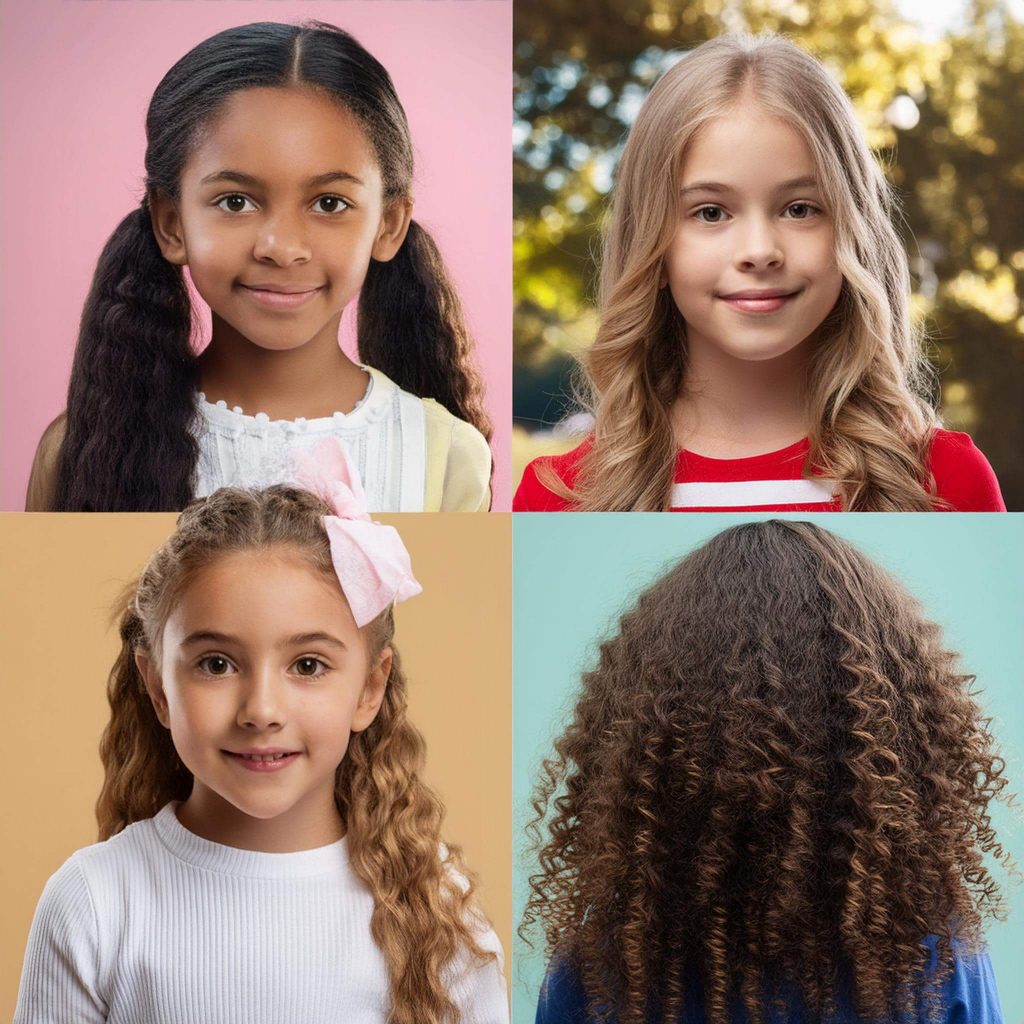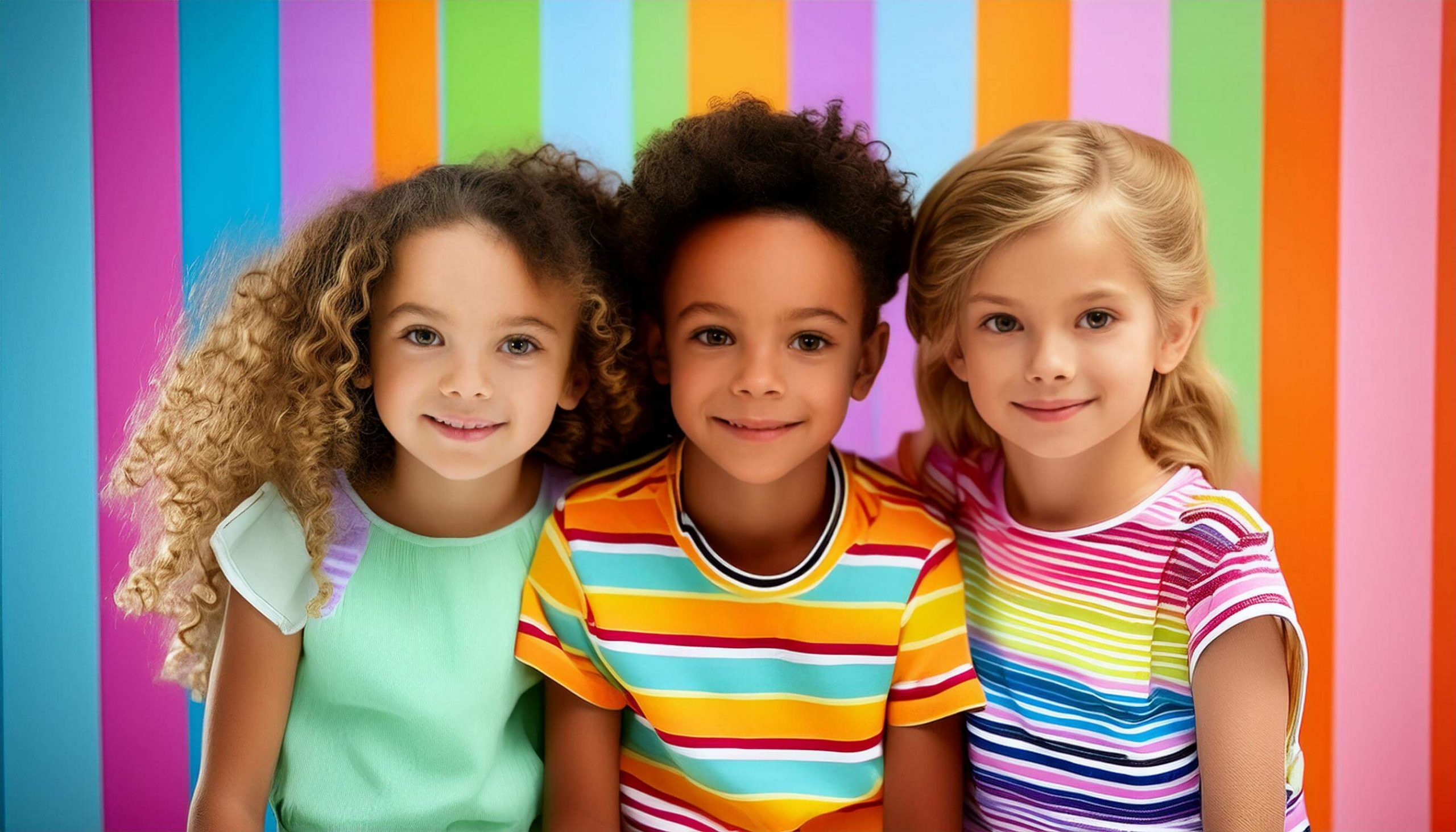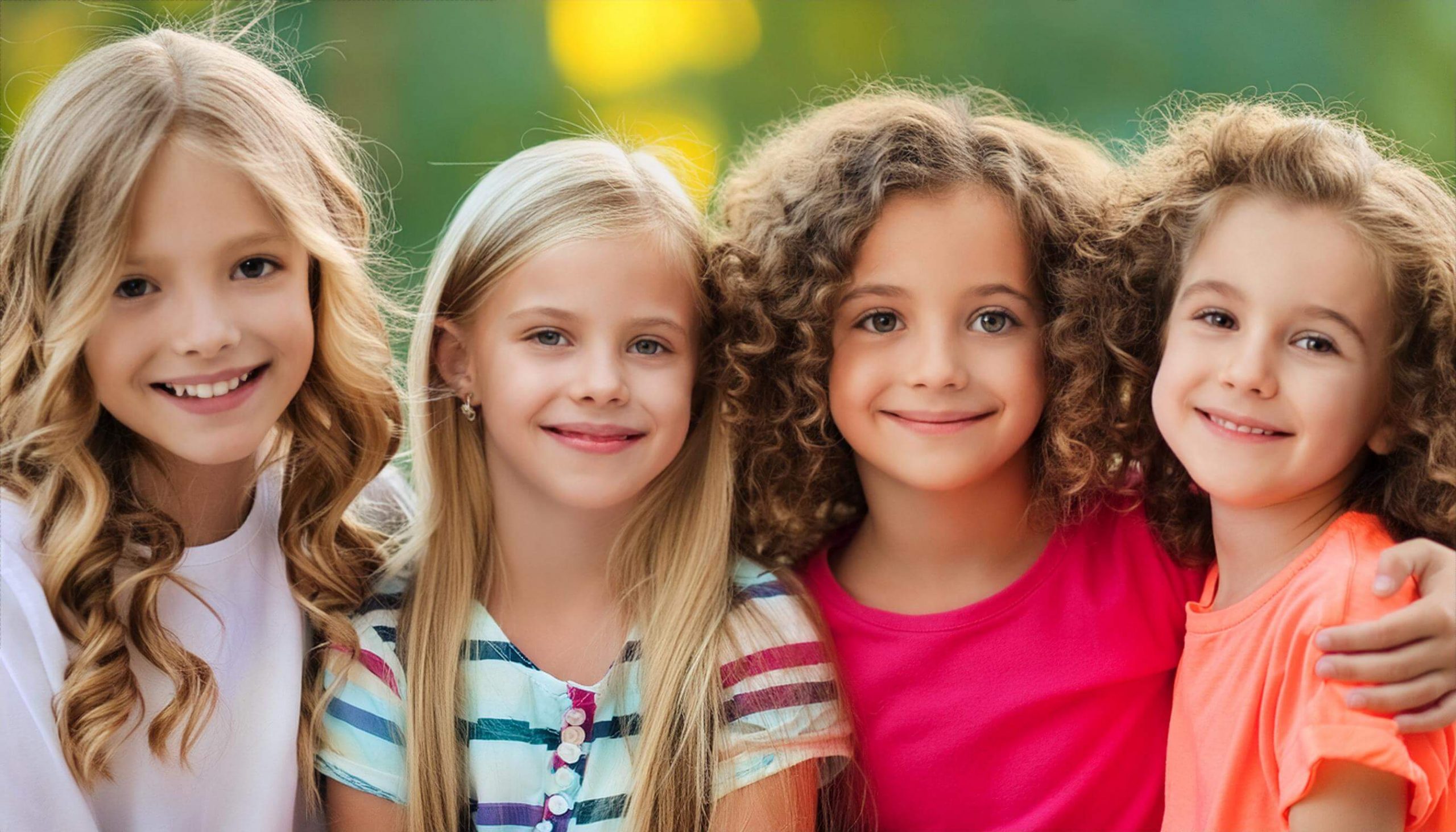Welcome to the fascinating world of children’s hair! At Kids Hair Play, we understand that parents are often curious about how their child’s hair grows and how to maintain its health. This blog will delve into the science behind children’s hair growth, the different textures, and tips for ensuring healthy hair.
Understanding Hair Growth in Children:
Hair growth in children follows a unique pattern influenced by various factors, including genetics, nutrition, and overall health. Here’s a closer look at how children’s hair grows:
Hair Growth Cycle:
Children’s hair, like adults’, goes through a growth cycle consisting of three phases: anagen (growth), catagen (transition), and telogen (rest). The anagen phase lasts 2-6 years, during which hair grows actively. The catagen phase is a brief transition period, and the telogen phase is when hair rests before eventually falling out and being replaced by new hair. Learn more about maintaining healthy hair during these phases in our Ultimate Guide to Children’s Hair Care.
Growth Rate:
On average, children’s hair grows about half an inch per month, translating to approximately 6 inches per year. This rate can vary based on genetics and overall health.
Influence of Genetics:
Genetics play a significant role in determining the rate of hair growth and its eventual texture. Children inherit hair traits from their parents, which can affect the thickness, curl pattern, and growth speed. Discover essential tips for maintaining curly hair in children.
Different Hair Textures in Children:

Children’s hair comes in various textures, each requiring different care methods. Understanding your child’s hair type can help you choose the right hair care routine:
Straight Hair:
Straight hair is usually smooth and shiny because the natural oils from the scalp can easily travel down the hair shaft. This type of hair is less prone to tangling and easier to manage.
Wavy Hair:
Wavy hair has a slight curl and tends to be more prone to frizz and dryness. Regular conditioning is crucial to maintaining its health and preventing tangles.
Curly Hair:
Curly hair can range from loose curls to tight coils. It is often more susceptible to dryness and breakage. Moisturizing shampoos and leave-in conditioners can help maintain its moisture balance.
Coily Hair:
Coily hair is characterized by tight curls or coils and is often the most fragile hair type. It requires gentle handling, regular deep conditioning, and protective styling to prevent breakage.
Tips for Healthy Hair Growth:

Maintaining healthy hair for children involves a combination of proper nutrition, gentle hair care practices, and regular trims. Here are some tips to ensure your child’s hair stays healthy and strong:
Balanced Diet:
A nutritious diet rich in vitamins and minerals supports healthy hair growth. Include foods high in biotin, vitamin E, and iron, such as eggs, nuts, and leafy greens.
Gentle Hair Products:
Use mild, sulfate-free shampoos and conditioners specifically designed for children. Harsh chemicals can strip natural oils and damage delicate hair.
Regular Trims:
While trimming hair doesn’t speed up growth, it prevents split ends and keeps the hair looking healthy. Regular trims every 6-8 weeks are recommended.
Avoid Tight Hairstyles:
Tight braids, ponytails, or buns can pull on the hair and cause breakage. Opt for looser styles that minimize tension on the scalp.
Protective Styles:
Protective hairstyles like braids or twists can help reduce breakage and protect the hair from environmental damage. Ensure they are not too tight and are changed regularly.
Scalp Care:
A healthy scalp is crucial for hair growth. Keep the scalp clean and free from buildup by washing regularly. Scalp massages can also stimulate blood circulation and promote hair growth.
Minimise Heat Styling:
Avoid excessive use of heat styling tools like blow dryers, straighteners, and curling irons. If necessary, use them on the lowest heat setting and apply a heat protectant.
Hydration:
Ensure your child’s hair remains well-moisturized by using leave-in conditioners and hair oils. Hydrated hair is less prone to breakage and split ends.
Conclusion:
Understanding the science behind children’s hair growth and texture can help you take better care of your child’s hair. By following these tips and using the right products, you can ensure that your child’s hair remains healthy, strong, and beautiful. At Kids Hair Play, we are dedicated to providing the best hair care services for children, making every haircut a fun and enjoyable experience. Book an appointment with us today and let your child’s hair shine!
For more tips, read our blog on maintaining healthy hair for kids.


